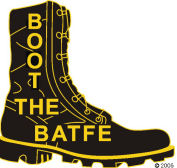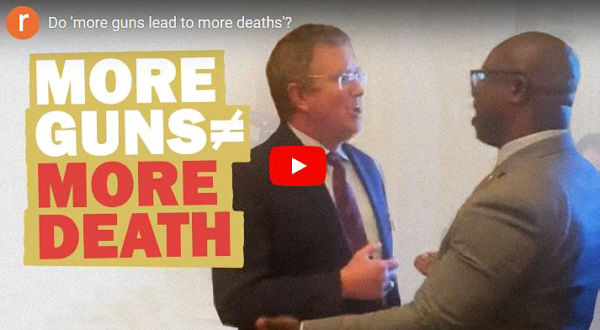

Do 'More Guns Lead To More Deaths'?
By Nick Gillespie. Apr 5, 2023
Just days after the school shooting in Nashville that left three students and three adults dead, Rep. Jamaal Bowman (D-N.Y.) and Rep. Thomas Massie (R-Ky.) got into a fiery exchange captured on video by Emily Brooks, a reporter for The Hill.
"There has never been a school shooting in a school that allows teachers to carry," said Massie. "More guns lead to more deaths," countered Bowman, "more guns lead to more deaths!"
It's understandable that tempers flare and voices rise in the aftermath of such horrific events. When faced with such situations, the urge to do something—to do anything—is nearly impossible to resist.
But is Rep. Bowman right that "more guns lead to more deaths?"
The short answer is no. That's great news, especially since reducing the number of guns in circulation presents not just immense pragmatic challenges but almost certainly insuperable constitutional barriers.
Over the past few decades, the number of guns in America has increased massively, so much so that there are now more guns than people in the United States. Yet federal crime statistics show that firearm homicides dropped about 40 percent between 1993 and 2018, from 7 per 100,000 people to 4.3 per 100,000 people (for nonfatal crimes involving guns, the decline was 71 percent). Violent crime, including homicides, did spike during the pandemic, and while the most recent data is incomplete, it's clear that gun-related violence remains far below where it was 30 years ago despite more guns than ever being out there.
When it comes to schools, the 2020-21 academic year, the latest for which full data is available, did see the highest number of school shootings with casualties this century. There are thankfully too few violent deaths to generate statistically significant conclusions, but the long-term trends show no increase in homicides or suicides among students, staff, and teachers.
..... 
![]()

























